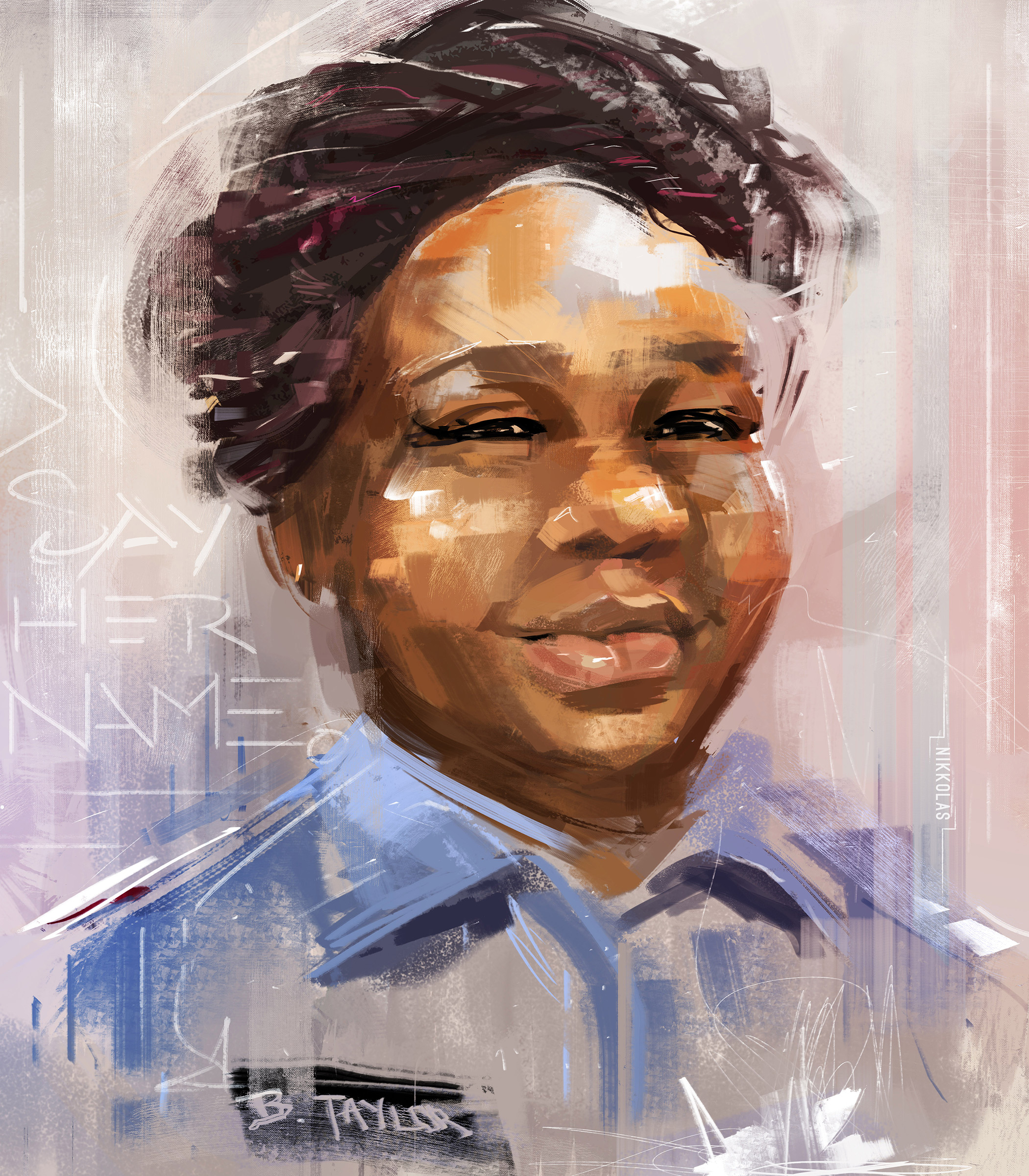
When I watched them kill Elijah McClain, I couldn’t make any art for days. It had been week after week after week of gut-wrenching stories of Black lives taken from this earth too early. I wasn’t sure if I could handle another one. After seeing the way Elijah pleaded for his life while walking home from the convenience store, it was so hard for me to watch and process.
But art is therapy for me. It’s not until I actually create an art piece to try to get my feelings out that I can really grieve and be at peace with the anger and sadness I have when I see these videos. Seven years ago, after Trayvon Martin’s murderer was acquitted, I started my Sunday Sketch series, to pull myself out of a dark place, while going through a divorce. Since then, these sketches have calmed me and helped me celebrate these people’s lives.
But my art didn’t just help me: it started to circulate in ways that blew me away. My piece showing Martin Luther King Jr. in a hoodie went viral and provoked conversations about how we still judge people by their appearance. Representative Marc Veasey shared my portrait of Atatiana Jefferson’s last moments on the House floor while arguing for police reform. Michelle Obama shared my portraits of Ahmaud Arbery, Breonna Taylor and George Floyd on Instagram. Soon I saw them on protest signs in New Zealand and other places all over the world.
My experiences have shown me that there’s a natural link between art and activism. With activism, there are so many problems and issues in the world, sometimes you wish you could just grab everybody and direct them toward solutions. Putting those issues into words isn’t that easy for me.
But art innately has the ability to move people: to shout out, “This is wrong! This needs to be fixed!” in a matter of seconds. People are able to rally around even just a single image.
It’s my job to get their attention and then show them how they can create some sort of positive change, whether to go out and protest or call their district attorney.

Over the past few months, I’ve created digital paintings of Arbery, Taylor, Floyd, and many other men and women who have been killed from police violence, and shared them on social media with calls to action. I want them to look like abstract oil paintings on canvas, but they’re also typically unfinished, which is a parallel to the way they didn’t get to live out their lives. With George Floyd, I have him staring at you. There’s so much power in looking into someone’s eyes.
A lot of my pieces are social experiments to say, “What do you feel when you see this human life?” If your first reaction is to say, “They deserved to die because …,” that says a lot about who you are. I hope my art will speak to those people who are so quick to justify the taking of a human life, so that they think: “Wait. This person should still be on this earth. They deserved better.”
Up until now, I’ve been creating art and advocating for Black lives from my perspective, of not wanting me to be pulled over and killed by the police. But on July 24, my wife gave birth to our son, Zion. Becoming a father has doubled and tripled my passion for wanting to make sure all of these issues are fixed. I cannot have my kid grow up in a world where he’s under threat of death because of the color of his skin.
For young artists, I always try to remind them: you have a powerful tool to paint the world you want to see. Sometimes, that means painting the broken things to wake people up. Other times, it’s to imagine what this world will look like once we have all of these things re-established. Because we are in a society that has devalued Black lives for centuries, we need joyful images.
More Must-Reads From TIME
- Dua Lipa Manifested All of This
- Exclusive: Google Workers Revolt Over $1.2 Billion Contract With Israel
- Stop Looking for Your Forever Home
- The Sympathizer Counters 50 Years of Hollywood Vietnam War Narratives
- The Bliss of Seeing the Eclipse From Cleveland
- Hormonal Birth Control Doesn’t Deserve Its Bad Reputation
- The Best TV Shows to Watch on Peacock
- Want Weekly Recs on What to Watch, Read, and More? Sign Up for Worth Your Time
Contact us at letters@time.com